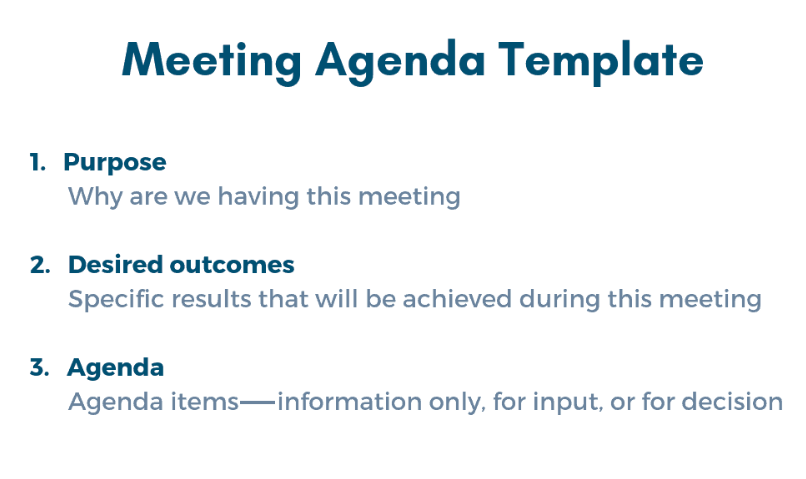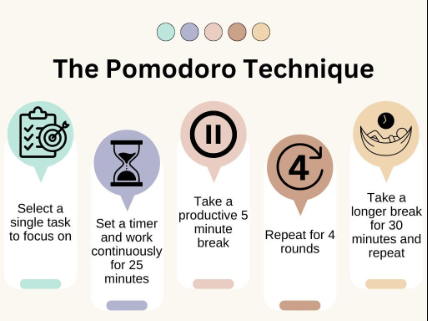To schedule efficient meetings and maximize meeting engagement, knowing when to meet is key. Think about what the meeting needs, what it’s about, how long it’ll take, and who’ll be there. It’s been found that the best time for meetings where decisions are made is between 10 a.m. and noon.
For getting lots of people to come, 2:30 p.m. on Tuesdays works really well.
These tips help plan schedule efficient meetings when everyone’s likely to do their best work. Also, avoid setting up meetings first thing on Monday mornings. That’s when people are usually getting up to speed for the week. This ensures time and resources are used wisely.
Introduction
Meetings play a big role in how a company works. But, 15 percent of a company’s time goes to meetings. It’s very important to plan meetings well to make schedules work better and help teams do more. Senior managers spend a lot of their time in meetings. They find most of these meetings unhelpful.
Unhelpful meetings cost more than $37 billion every year. So, it’s key to plan meetings the right way. This means deciding the meeting type, who needs to come, and having a clear agenda. For example, teleconferences can cover a lot of ground. But in-person meetings are better for making decisions and building relationships.
Studies show Monday mornings are when employees do their best work. So, meetings at this time might not be a good idea. Research from YouCanBookMe finds Tuesday at 2:30 p.m. is the best time for meetings. Good timing and being ready, like sharing materials early and sticking to a 45-minute limit, can really help the team’s productivity.
It’s also key to have a clear goal for every meeting and end with steps to take next. Having the right people there and dealing with important issues fast are also must-dos to keep meetings useful. Using these tips, team productivity can get better. This makes sure time and resources are used well.
Meetings are a significant component of organizational functioning, yet 15 percent of an organization’s time is lost to meetings. Effective meeting planning strategies are essential for an efficient meeting schedule and enhancing team productivity. Senior managers, often spending up to half their work hours in meetings, reveal that a staggering two-thirds of these meetings are deemed unproductive. Given that there are around 25 million meetings held daily in the US, the need for efficient meeting strategies is quite clear.
Factors to Consider When Scheduling a Meeting
When planning a meeting, consider several key factors. These ensure the meeting runs smoothly and is productive.
Meeting Necessity
First, decide if you really need a meeting. Can emails or chats achieve the same goal? The US holds about 55 million meetings weekly. Cutting down on meetings can save many hours.
Content of the Meeting
Think about what you’ll discuss. Research shows making decisions works best between 10 a.m. and noon.
Try to plan important meetings during these hours. This can make decisions clearer and keep everyone involved.
Meeting Duration
Plan how long the meeting will last. It should be long enough to cover everything. But, don’t let it drag on too long.
The average American is in meetings 7.5 hours a week. Sadly, 71% feel these meetings aren’t productive.
Good time management tools makes meetings more effective.
Existing Schedule Conflicts
It’s important to schedule around other commitments. Check when everyone is free before setting a time. This helps avoid burnout and increases productivity.
The best time for a meeting? Research suggests 2:30 p.m. on Tuesdays. This time slot tends to work well for most.
Attendance: The Best Times for Maximum Participation
It’s crucial to improve meeting attendance for better talks. The timing matters a lot for getting everyone involved. By studying this, we learn when to meet for the best results.
Optimal Days and Times for Attendance
Studies suggest early afternoon is best for meetings. Really, 2:30 p.m. on Tuesdays works well. It skips morning rush and post-lunch tiredness. This means people are more awake and ready.
Offering different times through email helps. So does using polls to find what works for everyone.
Why Early Afternoons Work Best
Early afternoons are perfect. By then, people have done their morning tasks but aren’t tired yet. Tools like meeting schedulers and Google Calendar make planning easier. This helps us get more people to come.
Scheduling early gives everyone time to get ready. This leads to meetings that do more.
Influence of the Day of the Week
The day we meet is also important. For example, many prefer meetings on Wednesdays. This avoids Monday’s busyness and Friday’s wind-down.
Understanding which day works best can boost attendance. It makes sure we use our time well together.
Decisive Meetings: Scheduling for Clear Decision-Making
Making good decisions in meetings needs the right timing. This helps everyone stay focused and take part well. Studies from Harvard Business Review link too many meetings with less work done. So, picking the best time for meetings helps avoid feeling too tired to decide well.
Avoiding Decision Fatigue
Decision fatigue happens when you have to choose too much, too fast. It makes decisions worse. To avoid this, try to set meetings for big decisions between 10 a.m. and noon. That’s because people have more energy and have made fewer decisions then. One study by Kumospace recommends not going over 16 short meetings a week to keep focused.
Ideal Time Slots for Critical Decisions
The best times for big decisions in meetings are late morning to early afternoon. The Harvard Business Review suggests these times to avoid work delays. A University of California, Irvine study says disruptions can cut productivity by 10%. Starting and finishing on time shows respect and helps avoid too many decisions. By choosing these times, important decisions are made better.
Understanding Your Team’s Dynamic
It’s key to know your team’s rhythms to boost productivity. By analyzing team dynamics, leaders can make schedules that fit everyone’s energy. This leads to trust, teamwork, and constructive talk, improving performance by over 50%.
Energy Levels and Productivity
Teams vary in energy throughout the day, which impacts work output. For example, some are morning people, while others do better in the afternoon. Using tools like Everhour, which works with Asana, Trello, and Jira, helps managers spot these energy highs. This helps plan meetings at the best times, making decisions better and work smoother.
Peak Productivity Hours
Finding when the team is most productive is key for planning meetings. Experts suggest early afternoons are usually best, as energy is up after lunch. Doing a team analysis finds the best meeting times for everyone, avoiding any scheduling conflicts for better involvement.
Utilizing Breaks to Enhance Meeting Productivity
Regular breaks are key to keeping up productivity in meetings. They help stop burnout. Strategic breaks sharpen focus, improve decision-making, and keep everyone involved. Here, we’ll talk about the Pomodoro Technique. We’ll also discuss the value of scheduling breaks wisely.
Incorporating the Pomodoro Technique
The Pomodoro Technique keeps meeting attendees alert and effective. It involves 25-minute work sessions followed by 5-minute breaks. This routine helps keep tiredness away. After four cycles, it’s good to take a longer break. This lets everyone refresh themselves. Studies show taking short breaks often boosts focus and work quality.
Scheduling Strategic Breaks
Strategic breaks in meetings stop productivity from dropping and tiredness from growing. They make use of gap time, or short free periods, during work. The Microsoft Work Trend Index Report suggests taking planned breaks. This helps to recharge and regain focus. Tasks like going over notes or handling messages during breaks can lower stress and increase work output. Mixing in these breaks not only fits with the Pomodoro Technique but keeps teams lively and focused during meetings.
Tips for Scheduling Meetings with Remote Teams
Planning remote team meetings well ensures everyone stays engaged. Think about ways to include everyone to boost productivity and involvement.
Engaging Remote Employees
Boost meeting involvement by letting remote members lead some parts. Having cameras on makes everyone feel together. Use interactive tools too.
Know each one’s time zone and pick times that work for all. You can use tools like Scoop for schedule management. Sometimes, make meetings optional to fit different schedules and workloads.
Organizational and Planning Strategies
Think about other duties while planning meetings. Use scheduling tools to keep clear of conflicts. Only invite those really needed to avoid too many meetings.
Share meeting details like agenda, start time, and key topics ahead of time. This keeps things smooth. For teams both remote and on-site, pick meeting days when most are in the office. This helps everyone bond better.
Create precise agendas to focus discussions. Add ‘no meeting’ blocks to ensure some quiet work time. Start days with quick meetings to set the day’s goals. This boosts clear talks and work direction.
What Is the Most Productive Time to Schedule a Meeting?
Finding the best time for a meeting mixes a few key elements. It taps into when employees are most productive and teams work best together. Meetings at 2:30 p.m. on a Tuesday see high turnouts. By then, folks are deep into their weekly tasks and ready to focus.
For decisions, the golden hours are between 10 a.m. and noon. This avoids overwhelming tiredness from too many choices. It’s a prime slot for critical talks since everyone’s likely more engaged. But, steer clear of 9 a.m. meetings on Monday. People are too busy catching up on emails and work from the weekend.
For peak productivity, think later in the day. Late mornings to early afternoons are sweet spots. They catch people when they’re alert yet engaged post-lunch. Studies even suggest folks are more prepped for afternoon discussions.
The average American commutes for about 25.4 minutes to work. So, the period right after they arrive might not be great for meetings. Late mornings and early afternoons work better. Specifically, 3 p.m. on a Tuesday is great for getting everyone involved.
Mondays and Fridays don’t work well for meetings. Engagement is low as people are either winding down for the weekend or just starting their week. Tuesdays to Thursdays are the best days. Matching team energy levels with the meeting’s purpose is key for good results.
Leveraging Technology for Effective Meetings
Optimizing tech for scheduling is key for smooth meetings. With more work done from home, using scheduling tools is essential.
Tools for Scheduling
Tech makes setting up meetings quicker. Tools like Microsoft Teams or Google Calendar show when people are free. They help pick the best time and send invites.
Online platforms also make it easy to talk anytime. This helps remote teams work better together. In fact, emails sent early in the morning get better responses.
Setting Reminders and Alerts
Setting reminders is key for meetings. When reminders sync with calendars, everyone stays ready. This cuts down on missed meetings.
Smart tech helps send these reminders and keeps everyone informed. Recovering from meetings takes time. Timely alerts help manage that time well.
Finding Flexibility in Your Meeting Schedule
It’s key to have a meeting schedule that can change. This helps everyone work well together. Flexibility looks at things like when people work and what they prefer. Tools like Clockwise check everyone’s hours and suggest the best meeting times.
Adapting to Changing Needs
Change your meeting times often to meet everyone’s needs. Having days without meetings can help with focusing on work. Short, effective meetings under 30 minutes are good. Services like Outlook can end meetings early. This gives people a break before their next task.
Ensuring Availability for All
Making sure everyone can join meetings is important. You need to know when they work and their time zones. Clockwise finds the best times for group meetings. Check your meeting schedule to remove unneeded ones. Plan long meetings first and short ones after. This keeps focus time and boosts productivity. Being flexible lets teams match their best work times. It helps both the people and the company.
FAQ
What is the most productive time to schedule a meeting?
The best time for decision-making meetings is between 10 a.m. and noon. For high attendance, aim for 2:30 p.m. These times work well but depend on your meeting’s goal and the team’s work patterns.
What are key factors to consider when scheduling a meeting?
Think about if this meeting is really needed and what it’s about. Also, consider how long it will take and if your team is free. Aligning these ensures everyone values this time together.
When is the best time to schedule meetings for maximum participation?
For the most people, meet early in the afternoon, like at 2:30 p.m. Tuesdays are great for this. This skips the Monday rush and late-day tiredness.
How can I avoid decision fatigue in meetings?
Schedule important decision-making meetings between 10 a.m. and noon. This uses morning energy and avoids the drain from decisions made earlier.
How does understanding team dynamics influence meeting scheduling?
Knowing when your team works best is key. Schedule meetings when most people feel awake and ready. This makes meetings more effective.
How can I enhance meeting productivity using breaks?
Use the Pomodoro Technique—work for 25 minutes and then take a 5-minute break. After four cycles, take a longer break. This keeps energy up and attention sharp.
What are some tips for scheduling meetings with remote teams?
Get remote team members involved by having them present and keeping cameras on. Consider everyone’s time zones and schedules. Make meetings interactive to keep people engaged.
How can I leverage technology for effective meeting scheduling?
Use scheduling software and calendars to find the best times. Reminders and alerts help everyone stay prepared and on time, avoiding missed meetings.
Why is flexibility important in meeting schedules?
Being flexible means you can fit everyone’s needs and schedules, especially for remote workers. Account for time zones and personal schedules to keep meetings productive and engaging.

More Posts
These 11 Time-Wasting Habits Are Killing Your Productivity
In today's world, we face many tasks and challenges every day. This makes our responsibilities never-ending. However, some time-wasting habits sneak into our lives without us knowing. These habits make us less productive at work....
10 Useful Skills You Can Learn In Less Than a Week
In today's fast-changing world, learning quickly is key for growing personally and improving yourself. Josh Kaufman, a business expert, says you can learn a new skill in just 20 hours. You can break...
Best Month Planner Online- Reach Monthly Goals
Looking for the best month planner online? Check out our top 6 picks for the best monthly planner applications, both Free & Paid. In today’s fast-paced digital age, organizing tasks, goals, and commitments...
Weekly Digest for Effective People #7
May 21 to May 27




